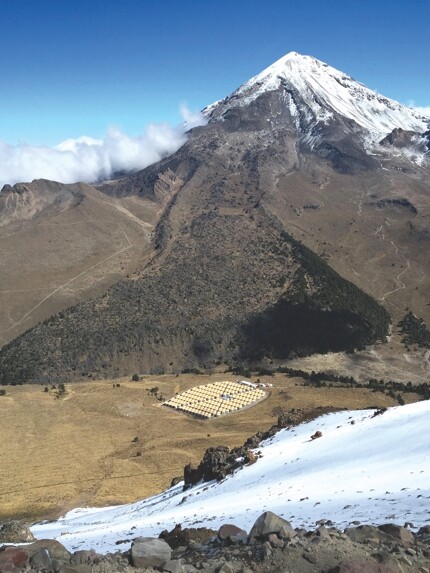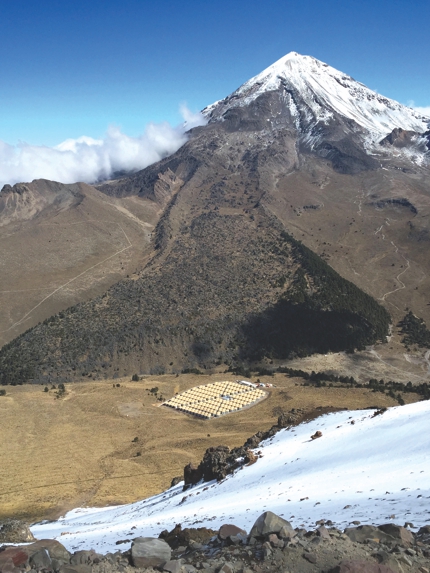HAWC inauguration
DOI: 10.1063/PT.3.2780
With its 300th detector tank in place, the High Altitute Water Cherenkov Observatory (HAWC) marked its completion on 20 Marth. Located at an altitude of 4100 m on the flank of the Sierra Negra, an extinct volcano east of Mexico City, the observatory keeps a constant lookout for high-energy gamma rays; data taking began in August 2013 with a partial array (see Physics Today, October 2013, page 22

HAWC

HAWC detects Cherenkov radiation from charged particles speeding through its 190 000-liter tanks of water. The particles originate from high-energy (100-GeV to 100-TeV) gamma rays colliding with the atmosphere.
Among the HAWC goals are to map TeV sources in the Milky Way and detect transient emissions from active galaxies and other sources. Unlike most Cherenkov telescopes, which are more sensitive but can only observe small patches of the sky, “we look at the entire overhead sky, so we have a reasonable chance of catching a gamma-ray burst,” says spokesman Jordan Goodman of the University of Maryland at College Park. HAWC will also watch for signals of dark matter in dwarf galaxies and of primordial black holes. It will collect about 2 terabytes of data each day.
The US–Mexico facility was completed on time and on budget, with the US ponying up about three-quarters of the $14 million in construction and Mexico covering the rest. The HAWC collaboration includes scientists from 15 institutions in the US and 14 in Mexico, plus a few participants from Poland and Costa Rica. Images of the site are updated roughly every 20 seconds at http://www.webcamsdemexico.com
More about the Authors
Toni Feder. tfeder@aip.org
